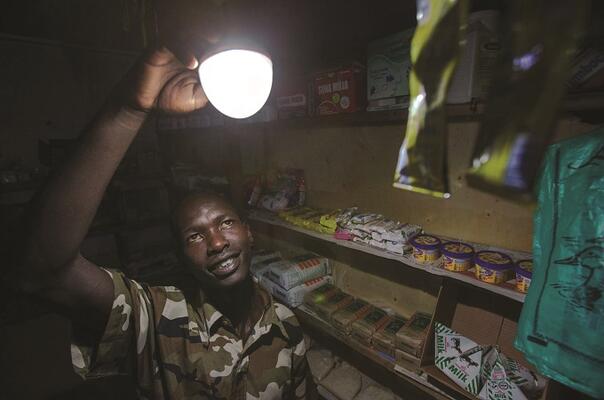
Why labour-intensive business is the future of job creation
The battle against unemployment continues to rage and nowhere more so than in developing economies. There is good reason for that. For example, in Africa more youths will enter the labour market in the next 15 years than in the rest of the world combined. Systemic change is needed to reverse the trend of jobless growth by shifting focus from labour to resource productivity to re-design employment markets fit for the 21st century.
Increasing labour productivity has been the focus of policymakers and business leaders alike for decades. The aim is to produce more goods and services with fewer hours worked. Innovations also tend to focus on increasing labour productivity and as a result we are racing towards an era we could define as ‘postjob.’ Robots and machines demand no salary; only electricity is needed for their work. In short, business has been incentivized to eliminate jobs when we need them more than ever.
The Global Opportunity Report, by DNV GL, the United Nations Global Compact and Sustainia, shows leaders around the world view unemployment as the most pressing global risk – but when presented with 15 different opportunities for corporate action the majority of respondents rated opportunities for job creation as those with the most promising impacts potential. It points to a readiness to re-think business for job creation. The recently published Sustainia 100 offers examples of businesses already doing so while using resources sustainably and thereby operationalizing global goals as they relate to good jobs and economic growth. It also points to some bigger business trends.
OFF-GRID SOLUTIONSHalf the global population could be best served with pay-as-you-go solar technology for energy instead of grid-based services. This certainly applies to Africa, where consumers at the bottom of the income pyramid are best served by off-grid solutions. An example of a company providing this kind of opportunity is M-Kopa, an East Africa-based enterprise delivering offgrid solar energy to financially vulnerable communities. Household solar kits are acquired for a US$ 30 deposit. After 365 daily payments for less than the daily cost of kerosene, the buyer owns their own solar system and becomes his or her own energy producer.
The business model of M-Kopa is labour intensive because once consumers acquire ownership of their solar kit, the relationship between M-Kopa and the consumer shifts from product to service. Consumers are offered around-the-clock assistance with their solar kits, which consequently demands high labour inputs. This business model is trickling up from Africa to Europe, with even IKEA, the Swedish furniture giant, offering off-grid household solar kits.
Currently M-Kopa operates in Eastern Africa and in Ghana in Western Africa. However, a major barrier to expansion is the lack of mobile connectivity and mobile banking options for businesses to unlock access to consumers by enabling them to pay the daily rates and user charges. A greater degree of digitalization of the economy can help drive job creation.
Providers such as BlueTown, a Danish company offering communications solutions across developing countries, can pave the way by connecting the unconnected through local masts, delivering wi-fi to off-grid communities. Clusters between off-grid energy firms, connectivity providers, mobile banking concerns and microcredit institutions can be a motor for sustainable job creation.
LOCAL FABRIC, LOCAL SKILLSAfrican cities are expanding at an almost unmatched rate. However, almost 200 million people live in slums and with an annual urbanization rate of 4%, that number is likely to rise. It suggests there is an urgent need to re-think construction and urban planning as untapped tools for job creation and sustainable production.
Another example is the Mass Design Group, a company based in the United States of America and Rwanda that is aiming to improve people’s lives through architecture and by employing mainly local staff, both skilled and unskilled. Unskilled people receive training, providing them with marketable skills, while skilled workers are given an opportunity to improve their crafts. Mass Design Group is part of the ‘lo-fab,’ or locally fabricated, movement and is using mainly local inputs for the construction, which reduces the need for transportation around the globe and thereby reduces emissions. It also enables local ideas and innovation during the design and construction processes.
The end of a construction project is, in many ways, a beginning. That is true especially since all impacts are evaluated and the local workers involved are equipped with new skills, tools and know-how. Mass Design Group is good example of a business developing synergies between Sustainable Development Goals (SDGs) and job creation. It is shifting productivity from labour to resources. Using more labour and equipping people with relevant skills requires more designers and supervisors on-site, which can increase construction costs. Policymakers need to step in and enable these businesses to create jobs by incentivizing hiring and increasing the costs of harmful natural resources use. In short, it requires systemic change.
FROM BUSINESS TO SYSTEMIf we are to achieve the SDGs, we need business models that require high inputs of labour, which is good news for the battle against unemployment. Businesses such as M-Kopa and Mass Design Group are already shifting productivity from labour to resources, which is true for all forms of circular business models as well. A shift from linear to circular production requires laborintensive business models, such as research and development, repair, maintenance and recycling. Policymakers everywhere need to support these businesses already leading the way by incentivizing the increased use of labour and the reduced use of planetary resources.



